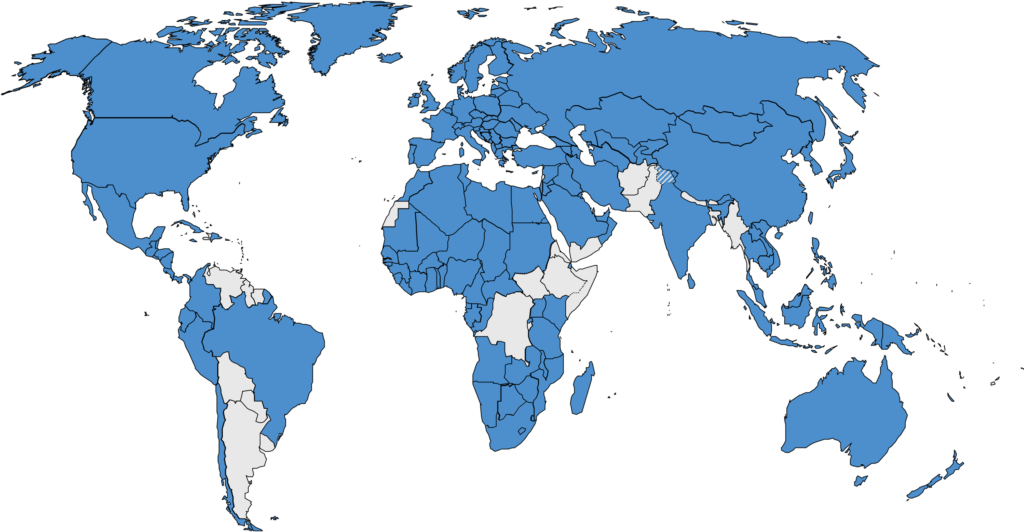We are often asked about PCT applications. It is a complicated process in detail. Indeed, there is a bad joke about a patent agent finding a genie in a lamp asking for world peace. The genie says “That is very complicated don’t you want something else?” The patent agent replies “OK, I’d like to fully understand the PCT system?” The genie responds “world peace it is.” The system in detail is complicated but the basics of the PCT system are straightforward.

Overview of the PCT system
The Patent Cooperation Treaty (PCT) system offers a unified procedure for filing patent applications in many places. The World Intellectual Property Organization (WIPO) administers the international treaty and the coordination of your filing in different patent offices. So with one submission you get the option to have an application in over 150 countries.
The process
You can file a PCT application as your first filing or within twelve months of your first filing. Here’s an outline of the typical PCT procedure:
- International Filing: File your application with a national or regional patent office or directly with the World Intellectual Property Organization (WIPO) and paying the filing fee.
- International Search: One of the world’s major patent offices, acting as the International Searching Authority (ISA), does a search for your claim 1 and provides a written opinion on the invention’s patentability.
- International Publication: Approximately 18 months after the earliest filing date, the content of the international application including the written opinion are laid open to the public.
- Optional Steps: You have the option of getting a supplementary international search or an international preliminary examination. Most applicants don’t request these.
- National Phase: After the end of the PCT procedure, typically at 30 months from the earliest filing date of the initial application, you request national phase entry into the national or regional patent offices of the countries where you want protection.
Ask your patent agent if a PCT application is right for you
There is no one profile of PCT filers. For sure large organizations tend to use it more than small ones or individuals but large entities file more patent applications. And SMEs and individuals file PCT applications. The questions are do you benefit from the positive attributes of the process while tolerating the negative aspects?
Here’s a brief summary.
- Pros:
- Delaying costs: Filing a PCT application allows for deferring the costs associated with national filings from 18 to 30 months.
- Extended decision time: Applicants have an additional 18 months to decide in which countries to seek patent protection.
- Streamlined process: The PCT system simplifies the process of filing international patent applications.
- Option value asymmetry: A PCT application is an option to file in many places as such the value of the option is different across inventor, assignee, licensee, investor, and purchaser. So holding PCT application increases your value to others with deeper pockets.
- Cons:
- Cost: The PCT application process adds more fees and often doesn’t show ROI unless filing in five (5) or more patent offices or dropping some applications at the written opinion stage.
- Postponed patent grant: The process can delay the grant of a patent.
- National laws: The applications still need to be examined to determine if they conform to each country’s patent laws so the outcomes will vary with office.
- Public disclosure: For those that traditionally only seek US patents know the application will become public.
- Limited search scope: The written opinion might not cover all relevant prior references.
- Limited Delay: 18 months comes up quickly.
There are many misconceptions:
- The PCT process is NOT automatic. A PCT application does not automatically grant one or more patents.
- A PCT application itself is NOT a patent. Despite what you hear on “Dragons Den” or “Shark Tank” there is no such thing as “a worldwide patent”.
- The national entry phase date is NOT the filing date. The whole point of the PCT process is one application so your filing date in the national phase countries is the PCT application filing date.
- PCT applications are NOT cheaper. Filing a PCT application can defer but not necessarily reduce overall costs.
- A PCT application is NOT the latest Tamagotchi. Don’t file a PCT application because someone else did. File an application if it is right for you.
- The PCT systems is NOT the Paris Convention. The PCT is a separate treaty to the Paris Convention for the Protection of Industrial Property which virtually all countries are a part of.
It’s important for applicants to weigh these factors carefully when considering your approach to international patent applications.

Conclusion
The staff at PMP would be happy to help with your questions about the PCT process.



